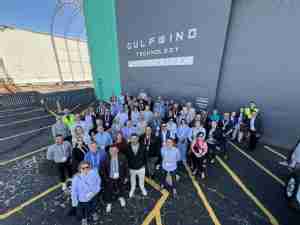The Pier C container shipping facility operated by Matson Navigation Co. and SSA Terminals Inc. is the fourth Port of Long Beach terminal to be equipped with shore power.
“What a great day for air quality in Long Beach. Together, with our industry partners, we have shown the world that it is possible to move more cargo and reduce emissions at the same time,” said Susan E. Anderson Wise, President of the Long Beach Board of Harbor Commissioners. “Shore power is one of the technologies that will help us continue to meet our Clean Air Action Plan goals.”
Wise was joined by Long Beach Mayor Bob Foster, state Sen. Alan Lowenthal, Assembly Member Bonnie Lowenthal, Matson and SSA executives and other Port officials at the dockside ceremony.
At berth, ships need electricity to operate lights, pumps, ventilation and communications systems, as well as other needs such as refrigerated containers. Traditionally, these functions are powered by a ship’s diesel-powered auxiliary engines, which generate air pollution at berth.
“Shore power and other technologies will allow us to grow – but grow smarter – as we reduce or eliminate the environmental impacts of shipping operations,” said Richard D. Steinke, Port of Long Beach Executive Director. “It’s thanks to our industry partners like Matson and SSA that we are able to complete important air quality projects such as this one.”
The $6.4 million project created about 60 jobs during the yearlong-plus construction period. The funds came from Port revenues earned from leasing and fees for cargo going through the Port. Dynalectric was the general contractor. Construction management services were provided by Arcadis U.S. Inc.
Matson and the Port of Long Beach in 2006 committed to the project as part of a “green lease,” which outlined several major environmental improvements at the Pier C terminal. Since then, the California Air Resources Board has made shore power a state requirement. Under CARB regulations, by 2014, 50 percent of all containership visits must use shore power.









